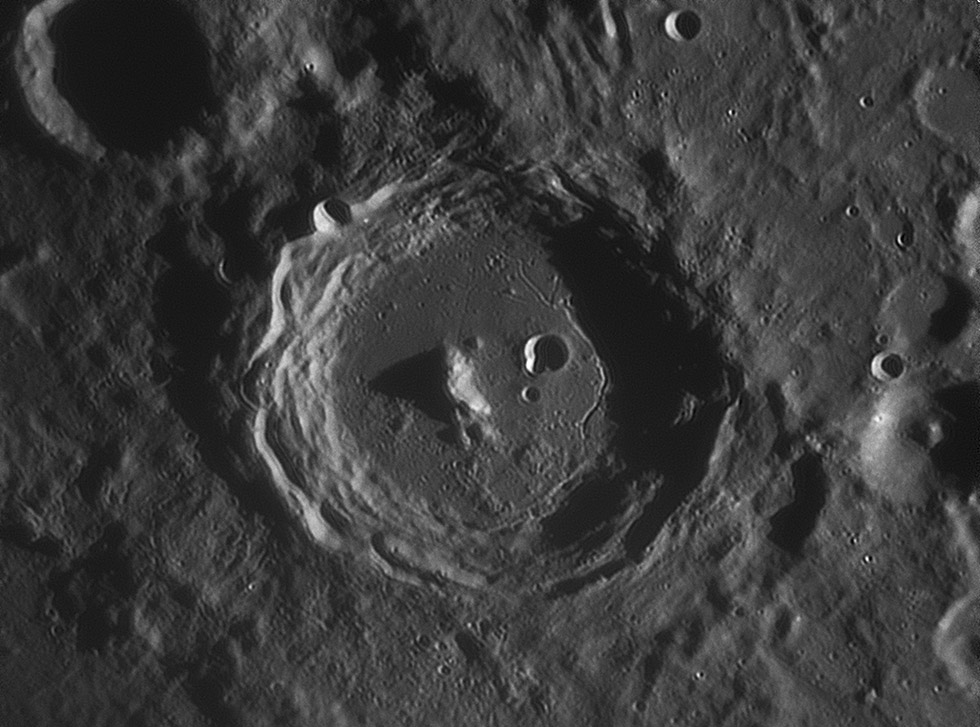June 6, 2014
Lurking

image by Leo Aerts, Belgium
Who knows what lurks under the floors of lunar craters? Floors have permutations whose reasons are not always obvious. Sometime their central peaks are massive (like Arzachel) or supermassive (Alpetragius), or mere clusters of runty hills (Eudoxus). In general, the size of a central peak complex increases with crater diameter but not always. Rarely, a crater floor is domed (Mersenius and Petavius), but most other craters have flat floors. The rim and broad, flat floor make Arzachel look like a standard large complex crater. But its central mountain is not central, it is clearly offset to the west; a delicate shadow to the east hints that a depression occurs where the center of the peak should be, and the LRO Pathtool reveals a 200 m deep depression there. Strange? Do central peaks sink? Why? The curved fracture/rill cutting the floor near the east wall places Arzachel in the category of a floor-fractured crater. Such craters are common near the margins of mare-filled basins, and Arzachel is just east of the likely rim of the Nubium Basin. Nearby Alphonsus is also floor-fractured. Like the feature on the south part of the floor of Lacus Mortis, the Arzachel fracture is part fault and part rille. The west side of the middle of the curved fracture is uplifted about 300 m compared to the east side, but to both the north and the south the faults changes to a rille. Why? The entire floor - discounting the peak - slopes downward about 700 m from southeast towards the northwest. Why? Aren't you glad you read LPOD so that an expert can explain everything to you?
Chuck Wood
Technical Details
March 9, 2014. Celestron 14" + 2.5x power mate projection + dispersion corrector + webcam DMK 31AF03.
Related Links
21st Century Atlas chart 16.
Yesterday's LPOD: To the Moon and Beyond
Tomorrow's LPOD: Rille Slope and Burial
COMMENTS?
Register, Log in, and join in the comments.



